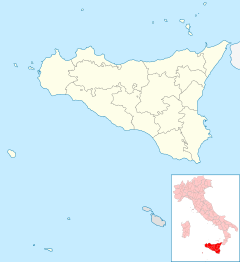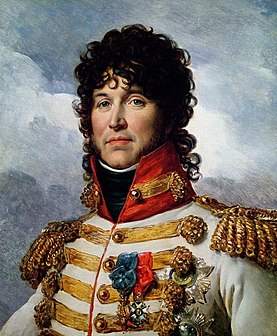
Charles III was King of Spain (1759–1788), after ruling Naples as Charles VII and Sicily as Charles V (1734–1759). He was the fifth son of Philip V of Spain, and the eldest son of Philip's second wife, Elisabeth Farnese. A proponent of enlightened absolutism, he succeeded to the Spanish throne on 10 August 1759, upon the death of his half-brother Ferdinand VI, who left no heirs.

Ferdinand II was King of the Two Sicilies from 1830 until his early death in 1859.

Ferdinand I, was the King of the Two Sicilies from 1816, after his restoration following victory in the Napoleonic Wars. Before that he had been, since 1759, Ferdinand IV of the Kingdom of Naples and Ferdinand III of the Kingdom of Sicily. He was also King of Gozo. He was deposed twice from the throne of Naples: once by the revolutionary Parthenopean Republic for six months in 1799 and again by Napoleon Bonaparte in 1805.
Giuseppe Venanzio Marvuglia was an Italian architect.

Museo di Capodimonte is an art museum located in the Palace of Capodimonte, a grand Bourbon palazzo in Naples, Italy. The museum is the prime repository of Neapolitan painting and decorative art, with several important works from other Italian schools of painting, and some important ancient Roman sculptures. It is one of the largest museums in Italy.
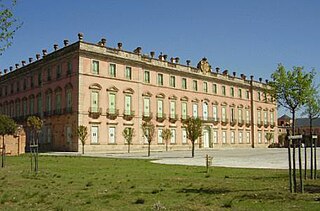
The Royal Palace of Riofrío is one of the residences of Spain's royal family and under the management of the Patrimonio Nacional, a government initiative dedicated to the care and maintenance of properties owned by the Spanish state which are used by the royal family. Situated in the municipality of San Ildefonso, in the province of Segovia, central Spain, the building is set in a wooded deer-park.

Maria Amalia of Saxony was Queen consort of Naples and Sicily from 1738 till 1759 and then Queen consort of Spain from 1759 until her death in 1760, by marriage to Charles III of Spain. A popular consort, she oversaw the construction of the Caserta Palace outside Naples as well as various other projects, and she is known for her influence upon the affairs of state. Moving to Spain in 1759, she then set about the improvements to the Royal Palace of Madrid but died before its completion. Maria Amalia was politically active and openly participated in state affairs in both Naples and Spain.

The Sicilian revolution of independence of 1848 occurred in a year replete with revolutions and popular revolts. It commenced on 12 January 1848, and therefore was the very first of the numerous revolutions to occur that year. Three revolutions against Bourbon rule had previously occurred on the island of Sicily starting from 1800: this final one resulted in an independent state surviving for 16 months. The constitution that survived the 16 months was quite advanced for its time in liberal democratic terms, as was the proposal of an Italian confederation of states. It was in effect a curtain raiser to the end of the Bourbon kingdom of the Two Sicilies which was started by Giuseppe Garibaldi's Expedition of the Thousand in 1860 and culminated with the Siege of Gaeta of 1860–1861.

The Royal Palace of Naples is a palace, museum, and historical tourist destination located in central Naples, southern Italy.
The Villa Spedalotto is the country home of the Paternò di Spedalotto family. The villa is situated on a hill surrounded by olive groves at Bagheria, near Palermo in Sicily. As all the Villas in Bagheria, it was built as a country house, and was traditionally used by the family only during the spring and autumn. While considered a national monument, it remains a private residence.
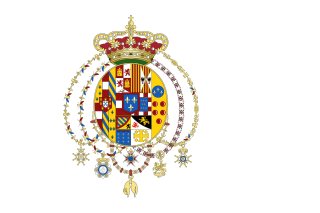
The Kingdom of the Two Sicilies was the largest of the states of Italy before the Italian unification. It was formed as a union of the Kingdom of Sicily and the Kingdom of Naples, which collectively had long been called the "Two Sicilies".
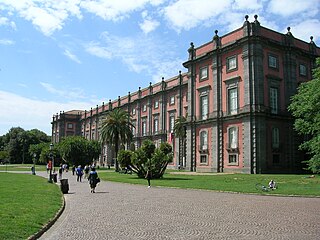
The Royal Palace of Capodimonte is a grand Bourbon palazzo in Naples, Italy, formerly the summer residence and hunting lodge of the kings of the Two Sicilies, and was one of the two Royal Palaces in Napoli. It today houses the National Museum of Capodimonte and art gallery of the city. "Capodimonte" means "top of the hill", and the palace was originally just outside the city, which has now expanded to surround it, and somewhat cooler than the city in summer.
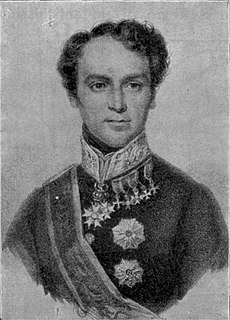
Domenico Antonio Lo Faso Pietrasanta was an Italian architect, archaeologist, and writer.
Vincenzo Riolo was an Italian painter of the Neoclassical style, active mainly in his native Sicily.

The Chinese Palace, also known as Real Casina alla Cinese, is a former royal residence of the House of Bourbon-Two Sicilies designed in the style of Chinoiserie. It is located in Palermo, inside the park of La Favorita. The Ethnographic Museum of Sicily, named after Giuseppe Pitrè, is located in one of the Palace's guesthouse.




